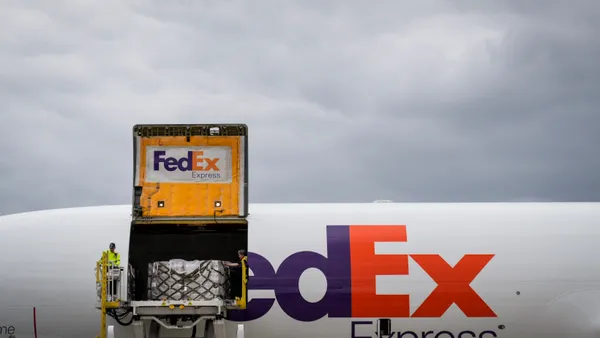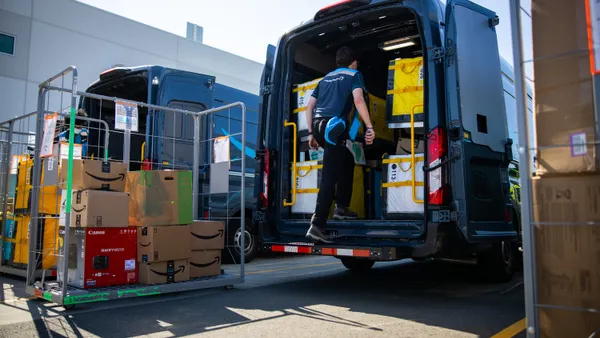Dive Brief:
- FedEx Ground uses virtual reality (VR) in employee trainings to better prepare and retain workers, according to executives who spoke at the HR Tech 2019 Conference in October.
- The company currently struggles with new hires quitting early on, overwhelmed by the volume and physically taxing nature of the work, Denise Abbott, FedEx Ground's vice president of human resources, said at the conference. VR exposes trainees to real work at FedEx Ground and in warehouses. It teaches them to identify safety risks and solve challenges in a low-risk environment.
- Classroom demonstrations only go so far, Jefferson Welch, director of HR for FedEx Ground University said. "So this lets us bring immersive learning technology into the classroom, so they can practice before they ever set foot on the dock."
Dive Insight:
According to a report from IEEE Spectrum, FedEx partnered with Strivr, a VR training systems company, 18 months ago to develop the program, which uses immersive digital environments and sensors to guide and monitor workers as they complete simulations.
Strivr has also developed similar programs for BMW, Walmart and other companies.
Abbot said the company is collecting performance data during the VR exercises and has found employees that go through immersive training are more engaged and show a "notable" improvement in retention.
"We're already seeing it on the docks. Managers are seeing more knowledgeable, safer employees," Welch said. Because managers and entry-level employees alike go through the VR training, more new hires are becoming interested in pursuing leadership roles within the company.
Walmart executives, also present at the conference, said the company has been using VR in employee training and evaluations with positive results.
"We use VR to assess their listening and problem-solving skills to see if, for example, they’re a good fit for a team leader role," said Heather Durtschi, senior director of content design and development at Walmart. "It's just one data point, but what we're seeing is that VR can make the same — if not better — predictions for who will succeed in a role than a human."
The use of VR, augmented reality (AR) and wearable technologies in supply chain operations has been on the rise in recent years, with one study projecting adoption levels will reach 90% in the next decade.
DHL announced earlier this year that it is expanding its AR-enabled "Vision Picking" program which equips employees with Google Glasses that allow them to pick, scan and sort inventory without needing a handheld scanner. Workers who participated in various global pilots reported being able to work faster and with fewer errors.












